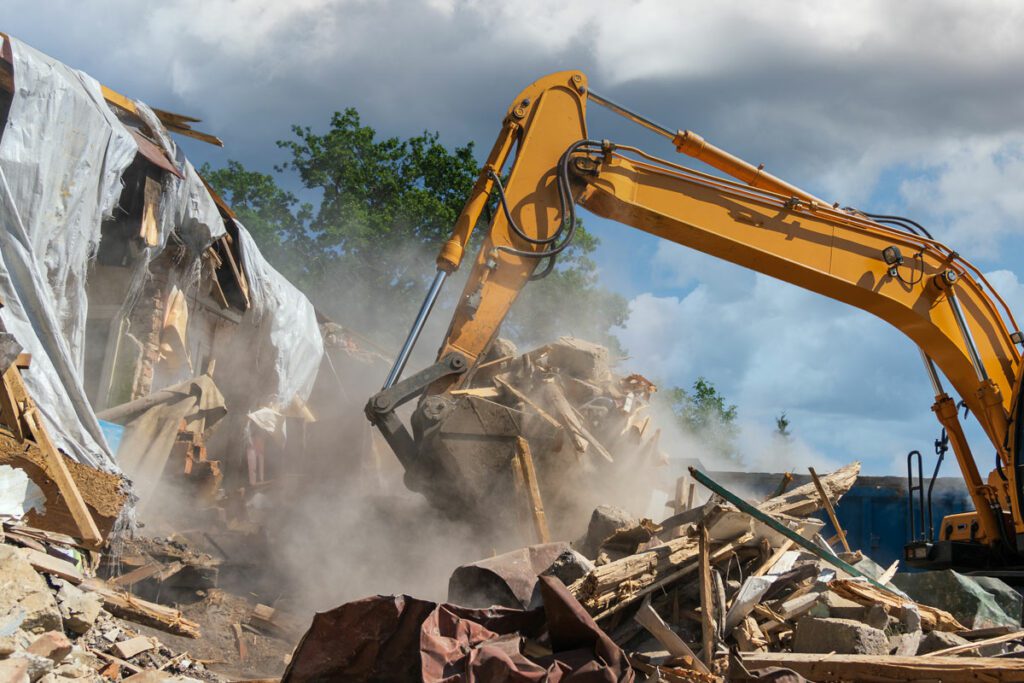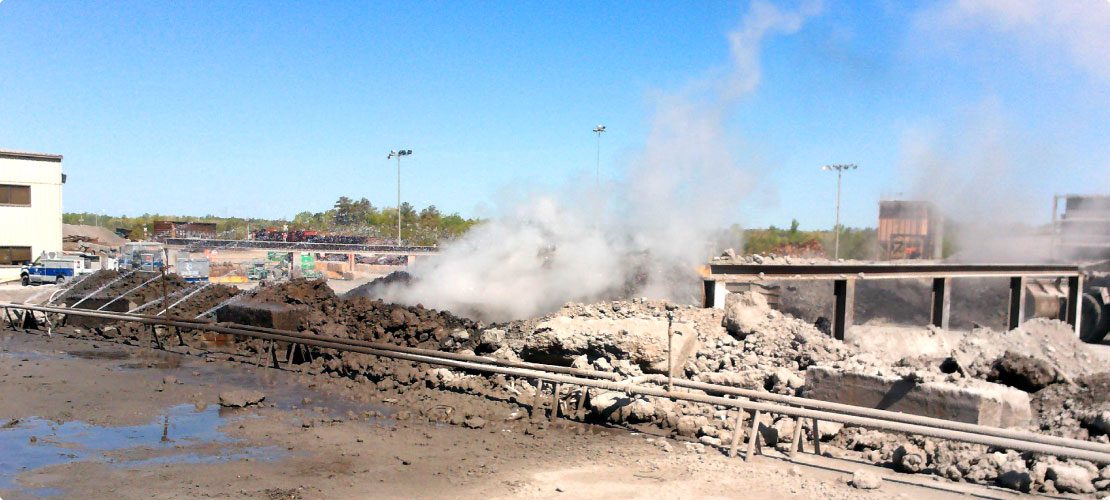
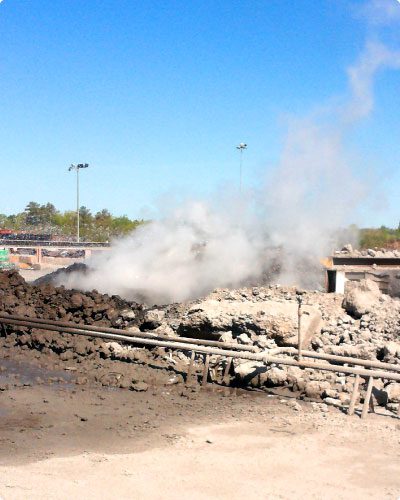
Dust big and small can be a pain on industrial job sites, but those pesky, moving fugitive particles are especially irritating. This umbrella term "fugitive dust" refers to dust particles that like to escape into the air without a directed location to be collected in.
The dust expands out into the open air, and if fine enough, it can float off-site. The most common and dangerous size of dust, respirable dust, has the ability to travel long distances since its tiny size is adverse to dropping to the ground on its own. Adding wind to the equation, dust particles of larger sizes can trek long distances as well. Dust control is necessary to fight emissions at their cause and prevent any negative implications. Check out Dust Control for Industrial Sites to learn about dust and how to suppress it.
There are two main known causes of fugitive dust on industrial job sites, and their effects can range from mildly irritating to life threatening depending on the amount of exposure to these particles.
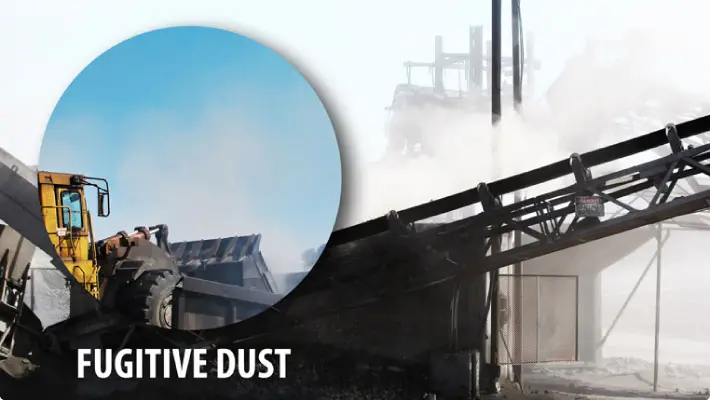
CAUSES OF FUGITIVE DUST
Wind
Wind causes problems for operations storing material in stockpiles, often found in aggregate production and at port facilities. Though stationary, these piles can create fugitive dust when a wind gust kicks up. The dust particles often are at the mercy of the breeze and will travel long distances as long as the draft remains.
Prime conditions for increased dust emissions are a hot and dry climate. Pair this with the occasional gust of wind and dust control equipment is an absolute necessity to protect workers and the surrounding community.

Industrial Disturbances
Lots of processes across multiple industries create fugitive dust. Operations that use crushers and shredders to break down material create copious amounts of particles at those contact points, and without the ability to direct the dust downward, it escapes into the air as fugitive dust.
In demolition tear downs, dust expands into the air every time the equipment munches on the building while breaking down structural components like concrete foundations and drywall.
Slag dumping at steel mills creates tons of hazardous dust upon release and impact with the slag pit.
All of these processes and many more create fugitive dust that escapes into the air due to contact between the dusty material and a harder surface at outdoor operations.
The transportation of materials at these sites is a common reason for fugitive dust as well. Heavy machinery like excavators and loaders disrupting stationary stockpiles generate particles when digging into the material, moving the full bucket and releasing the material at a new location.

EFFECTS OF FUGITIVE DUST
Harm to Workers and Nearby Communities
On dangerous job sites, safety is the top priority and fugitive dust is no execption. If dust control techniques are not applied, harm will come to on-site workers and possibly the community surrounding the dust-generating operations.
Injuries often start out as irritation to workers. Eyes and skin come into direct contact with the particles and can become irritated upon repeated contact. Dust smaller than 5 microns in diameter can travel to the lungs and cause irritation upon immediate contact.
Large amounts of repeated exposure to fugitive dust lead to the development of more serious issues.
A significant health hazard resulting from extensive amounts of dust exposure is silicosis. This disease comes from the specific exposure to crystalline silica in airborne dust. The disabling and irreversible lung condition brings symptoms such as shortness of breath, coughing and weakness. It can remain undetected for several years and can even be fatal. For more information on silica health hazards, check out the silicosis section of the dust control and hazards blog.
Check out the Dust Control and Hazards blog for more on silica!
In the mining industry, coal workers are at risk of pneumoconiosis or black lung, which is a life-threatening condition that results from ample inhalation of hazardous coal dust. Some symptoms include coughing, chest tightness and shortness of breath. This disease scars the lungs which prevents oxygen from reaching blood cells during breathing. This can result in stress on internal organs.
Black lung and silicosis are just two of the diseases developed from unprotected exposure to fugitive dust. For additional hazards facing the demolition industry, check out the dust safety and health training for demolition and reconstruction activities blog.
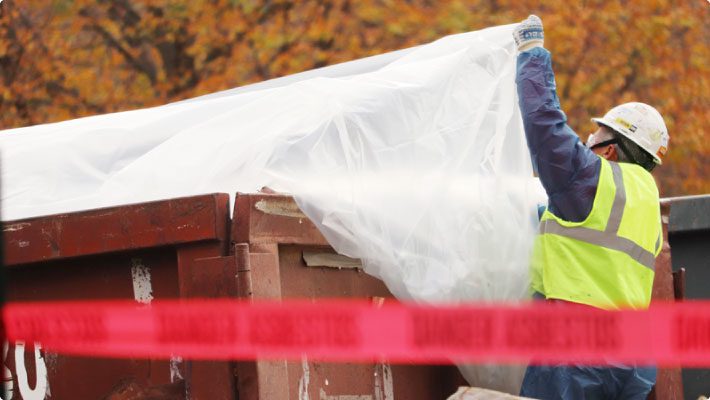
READY FOR A QUOTE?
Talk to a dust control specialist and get a quick quote for your project.
PROTECT FROM FUGITIVE DUST EMISSIONS
There are several ways to protect workers from fugitive dust and the harmful effects of overexposure.
The first line of defense is on the person itself. Whenever a worker goes on-site into the proximity of fugitive dust, protective gear should be worn. Safety glasses help prevent dust from making contact with laborers' eyes and stop any irritation. Dust masks and respirators help protect from inhalation of dust, preventing irritation in the lungs and more serious developments. Long clothing, such as jeans and long sleeved shirts, will help prevent skin irritation.
Other methods for protection against fugitive dust include preventive measures and active methods. Preventive measures are dust control techniques used to reduce the amount of dust created during dust generating activities. For more on preventive methods, check out How to Prevent Dust.
Active methods are used to remove dust after it has been generated and released into the air. To learn the most effective way to take down dust out of the air, see the Remove Dust from the Air blog post.
STOP FUGITIVE DUST AT YOUR JOB SITE!
Receive a FREE quote and talk to a dust control specialist today to stop migrating dust!



